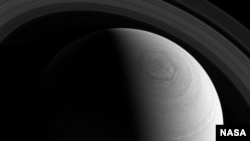The Cassini space probe, which has been circling Saturn since 2004, has detected interstellar dust, according to a new study.
Cassini is equipped with a “cosmic dust analyzer”, which has sampled “millions of ice-rich dust grains.” According to NASA, the overwhelming majority of the millions of dust grains come from Saturn’s moon, Enceladus, which has been shown to have active jets spraying into space.
However, a mere 36 grains appear to come from interstellar space.
In the 1990s, NASA and the European Space Agency made the first observation of interstellar dust and determined its origins were in the local interstellar cloud, “a nearly empty bubble of gas and dust that our solar system is traveling through with a distinct direction and speed.”
"From that discovery, we always hoped we would be able to detect these interstellar interlopers at Saturn with Cassini. We knew that if we looked in the right direction, we should find them," said Nicolas Altobelli, Cassini project scientist at ESA, and lead author of the study. "Indeed, on average, we have captured a few of these dust grains per year, travelling at high speed and on a specific path quite different from that of the usual icy grains we collect around Saturn."
According to the study, the dust particles collected by Cassini were traveling at 72,000 kilometers per hour, which is fast enough to “avoid being trapped inside the solar system by the gravity of the sun and its planets.”
Unlike the discovery in the 90s, the Cassini probe was able to determine what the dust is made of. Researchers found that the particles were all similar and contained magnesium, silicon, iron and calcium in “average cosmic abundance.”
This is in contrast to the stardust found on some meteorites, which is “generally old, pristine and diverse in their composition.”
"Cosmic dust is produced when stars die, but with the vast range of types of stars in the universe, we naturally expected to encounter a huge range of dust types over the long period of our study," said Frank Postberg of the University of Heidelberg, a co-author of the paper and co-investigator of Cassini's dust analyzer.









